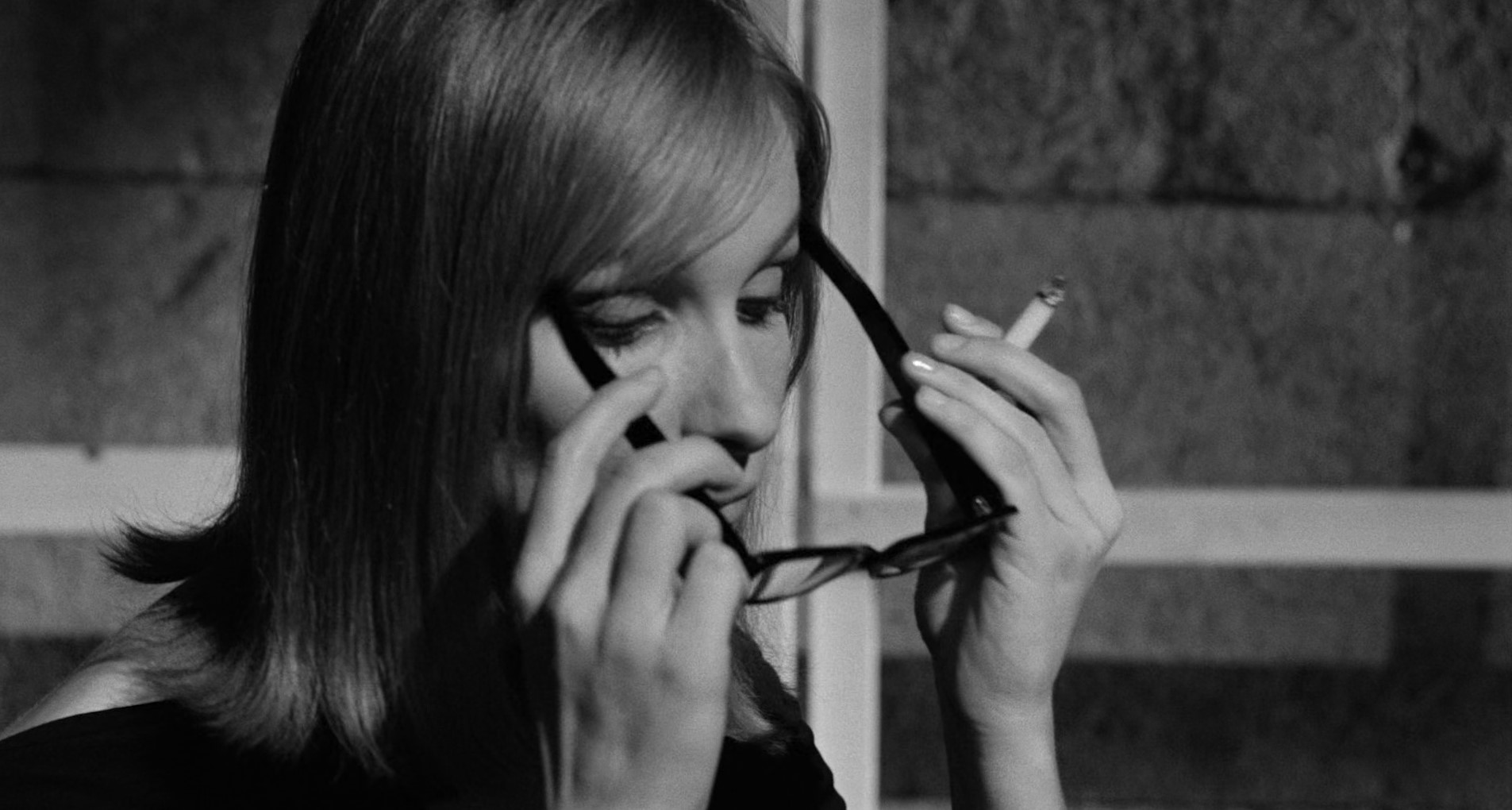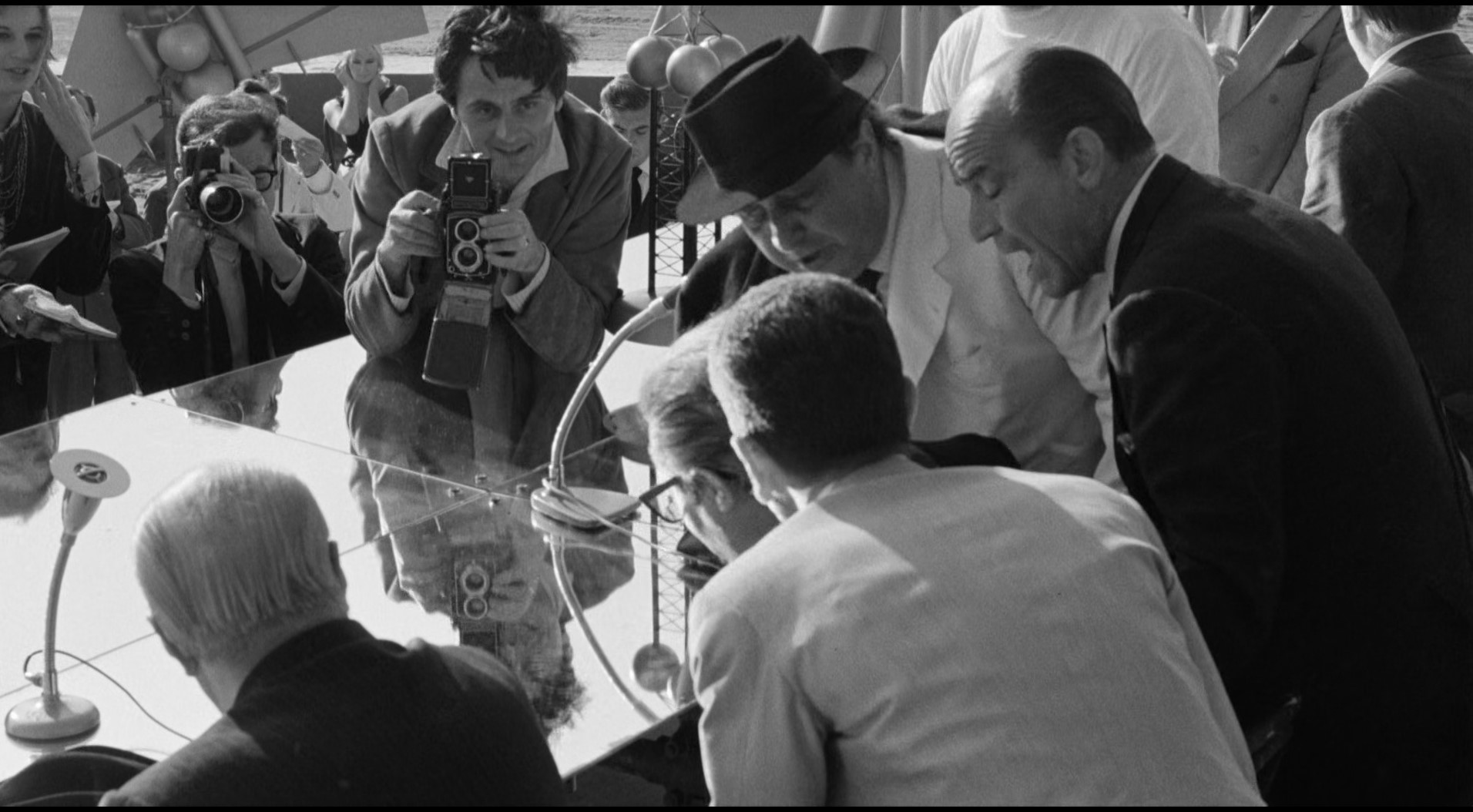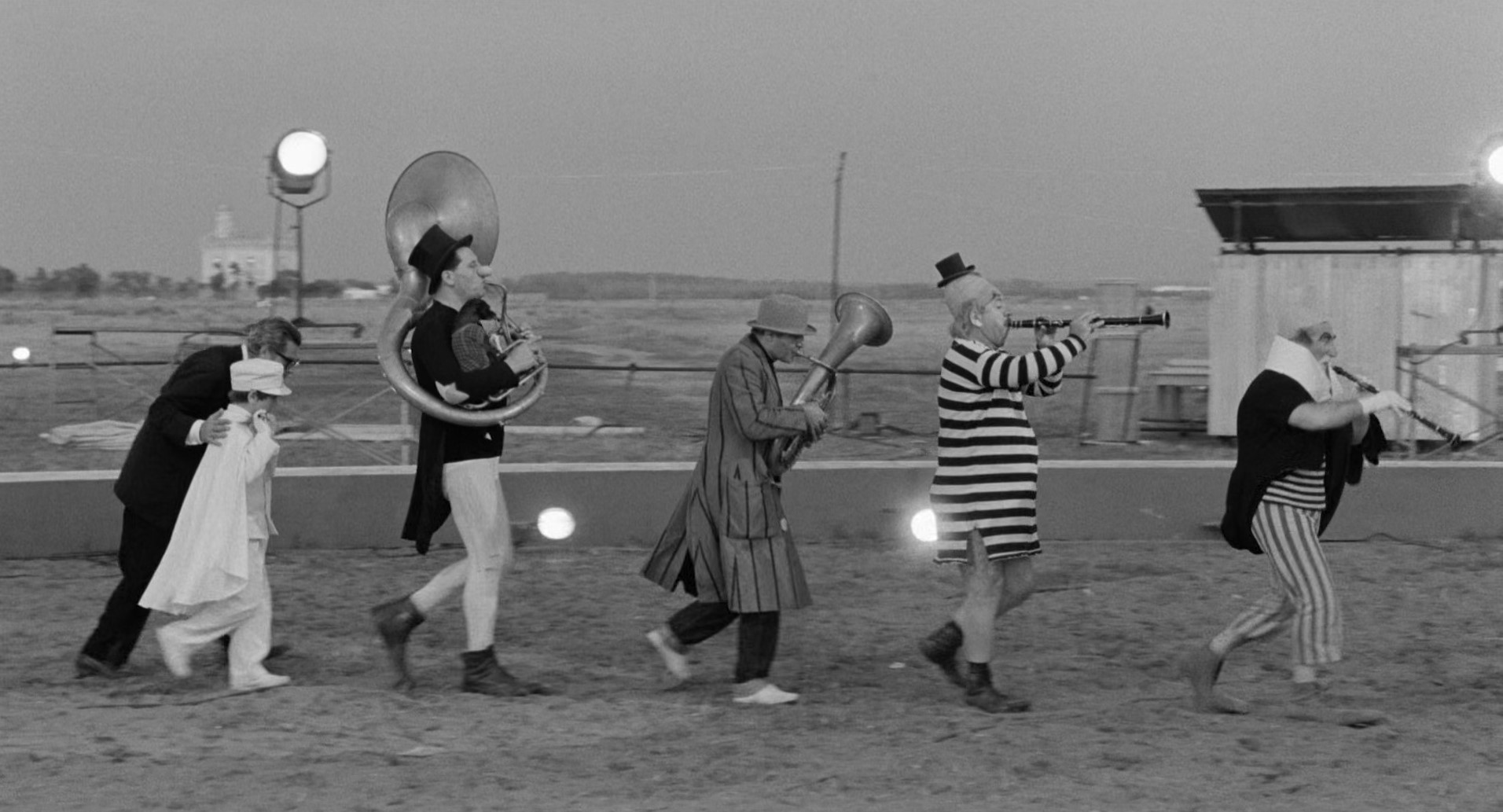The movie 8 and 1/2 follows director Guido as he tries to find his artistic identity through the pain of creativity and inner conflict. Guido’s journey goes beyond mere failure and signifies his maturation as a human being, and the movie delves deeply into the inner struggles of an artist and the complexity of the creative process.
Guido, a renowned filmmaker, is mentally and physically exhausted due to the pressure of his next project and the exhaustion of ideas. The opening sequence, which begins with his nightmare, shows the situation and state of mind Guido is in. As if to suggest his frustrating reality, traffic is paralyzed and Guido is trapped in his car, choking on gas as people look on impassively, and when he manages to escape, he floats freely through the air, only to be caught by another version of himself and plummet to his death. This suggests that Guido feels the pressure of people’s gazes and expectations, and that his momentary sense of freedom is only an illusion.
Eventually, Guido travels to a hot spring to recuperate, but even there, he can’t catch his breath. Wherever Guido goes, screenwriters, producers, and actors surround him. In this scene, Guido struggles to maintain his authority as a director, but is gradually crumbling under the constant demands and pressures of his surroundings. Guido struggles to find his identity and will to create, but he sinks deeper and deeper into confusion.
There are also several women who symbolize Guido’s complex inner life, including his mistress, Carla, who is almost always dressed in a black suit and appears to have many secrets, while Guido is always dressed in colorful outfits, symbolizing pleasure for Guido. Guido’s attempts to dress Carla up like a prostitute show his repressed psychological state in real life, but she cannot give him anything more than pleasure and cannot fully satisfy him.
Guido’s desires and moral conflicts are repeatedly revealed in his dreams and fantasies, which reflect the fears and insecurities he represses deep within himself. Guido constantly tries to fill his deficiencies, but all of his attempts end in failure. In the process, his anxiety grows more and more, which leads to a heavy flow of emotions that overwhelms the overall mood of the movie.

His wife, Luisa, who also symbolizes stability, contrasts with Carla with her well-dressed clothes and black horn-rimmed glasses and gives Guido the comfort of an old friend, but Guido’s affection for her has grown cold and she is tired of him. Meanwhile, Guido’s muse, Claudia, represents redemption in the movie, but when she fails to understand him like the other women, Guido leaves her disappointed. Saragina, a prostitute who symbolizes nostalgia throughout the film, represents sexuality and innocence, and Guido’s feelings that he has stopped growing since childhood.
The various female figures in the film represent Guido’s internal conflict between desire and restraint, which is characteristic of New Italian cinema, which focuses on internal issues away from political and social concerns, and also shows the upper-class protagonist as morally stagnant and pleasure-oriented. These internal conflicts play an important role in Guido’s journey to find his identity, which enriches the film’s themes.
While “8 and 1/2” is similar to François Truffaut’s “Day for Night” in that it is set on a movie set, the two films have very different formats. The story of 8 and 1/2 oscillates between Guido’s subjective fantasies and objective reality, while Day for Night is a playful portrait of not only the director but also the various human characters and the events that unfold within them. The reason why the two films have different formats despite dealing with similar themes is that the focus is on different characters in the films. The protagonist of ‘8 and 1/2’ is Guido, a filmmaker, and his fantasies do not stop at showing the reality of filmmaking by reminiscing about his childhood or revealing his desires, but represent the director’s thoughts and reflections on the movie he feels.
Guido’s flashbacks reveal how complex his feelings are about the art of cinema. It’s more than just the pain of filmmaking; it’s about the essential reason for being an artist. Guido is torn between the memories of his childhood and the pain of his present, and in the process, he questions what filmmaking means to him.
However, the protagonist of ‘Day for Night’ is not defined as a director, but a variety of characters, including actors, who reveal their anguish through unharmonious relationships rather than the director’s anguish over his work.
In 8 and 1/2, the characters in the movie constantly ask Guido for his opinions and thoughts on the movie, but he never gives a clear answer. In particular, when Guido walks by in a hotel lobby and people ask him questions one by one, the film emphasizes Guido’s confusion by showing the characters asking questions without editing, just by moving the camera. In addition, the sets in the film are impressive, with the walls of the restroom in the opening sequence being made up of black and white tiles that create a dizzying feeling and indirectly reveal Guido’s psychological state. The Tower of Babel, which is said to have collapsed because human pride pierced the sky, foreshadows Guido’s fate in the film as his imagination is exhausted, and the ‘spaceship set’ in the second half of the film likewise symbolizes Guido’s desire to escape.

At a press conference for his next film, Guido is bombarded by a barrage of cameras and unanswerable questions, so he hides and pulls out a gun, and the subsequent sound of a gunshot leads us to believe that he has committed suicide due to the stress, but it actually signals the end of the extreme pain he is experiencing.
In this scene, Guido goes beyond simple failure and into a fundamental questioning of the meaning of life. He realizes that the cinematic success he has been chasing no longer satisfies him and that everything has been in vain, but this realization also signals a new beginning for him.
In the meantime, Guido has been using people and acting selfishly in the name of art, and his life has ended up going in a direction he didn’t want, but it is only when he is alone, when he loses everything, and when he realizes true love that he becomes a mature adult. Especially in the final scene, when the marching child Guido walks away, it seemed to represent the adult Guido letting go of the child Guido.
But that’s not to say that all of his problems are solved. Considering that 8 and 1/2 is based on director Federico Fellini’s own autobiographical story, it seems that Fellini’s love of cinema, his fear of running out of ideas, and his anguish over his own future through cinema is a reflection of his own future. Through the device of illusion.
The ending of 8 and 1/2 is not a simple happy ending. Guido cannot be said to have completely resolved his confusion and conflict. In the final scene of the movie, he says goodbye to his younger self and tries to make a new beginning, but the uncertainty and insecurity he feels along the way remains. This leaves the audience with the implication that Guido’s story is not over, and that his inner struggle will continue for years to come.
Throughout the movie, Guido is constantly trying to find his identity and motivation to create, but he is repeatedly shown wandering on the border of reality and fantasy. This shows that he has lost direction in his life, along with a deep sense of doubt about his role as an artist. Guido’s worries are not limited to completing his next work, but extend to more fundamental questions about the reason for his existence as an artist. As such, ‘8 and 1/2’ remains a deep exploration of an artist’s life and the pain of creation through Guido’s personal anguish.

In addition, the circus-like parade in the final scene of the movie is a visual representation of Guido’s inner world, where the various characters surrounding his life come together to celebrate his life. However, this scene is not just a celebration. The characters in the parade are all people who have had an impact on Guido’s life, and their marching together symbolizes Guido’s attempt to come to terms with his past and find new meaning in it. However, there’s an undercurrent to the parade that suggests Guido hasn’t completely escaped the turmoil that still surrounds him.
Guido feels a certain sense of liberation in this ending, but his journey is far from complete: he is still struggling to create something new, and he is still battling the insecurities that lie deep within him. In this sense, 8 and 1/2 is Guido’s personal story, but it is also a reflection of the universal creative pain that all artists experience.
Federico Fellini delicately portrays his own inner struggles as an artist in this film, while also demonstrating the endless possibilities of the cinematic medium. His unique directorial style and stunning visuals make 8 and 1/2 a masterpiece of art cinema, and it is considered one of the most influential works in cinema history. Guido’s story is ultimately intertwined with Fellini’s own, giving the audience a chance to look into the complex inner workings of the artist.
In the end, 8 and 1/2 shows that an artist’s creative process is not simply a product of inspiration, but of constant self-reflection, pain, and inner conflict. Guido tries to sublimate his pain in the film, but he realizes that the process is not easy, and he eventually comes to accept his limitations. This signifies his maturation as an artist, but also as a human being.
In this context, the ending of 8 and 1/2 can be understood as Guido’s willingness to overcome his past and make a new beginning, while also foreshadowing the inner journey he will continue to take. This ending leaves the audience pondering Guido’s future as an artist and as a person.
Through this movie, Fellini sincerely communicated his concerns and thoughts as an artist to the audience, which makes 8 and 1/2 more than just a movie. It’s a deep reflection on Fellini’s own life as an artist, as well as an exploration of the nature of creation. Audiences will be able to feel the meaning of art, the pain of the creative process, and the beauty that blooms from it.
